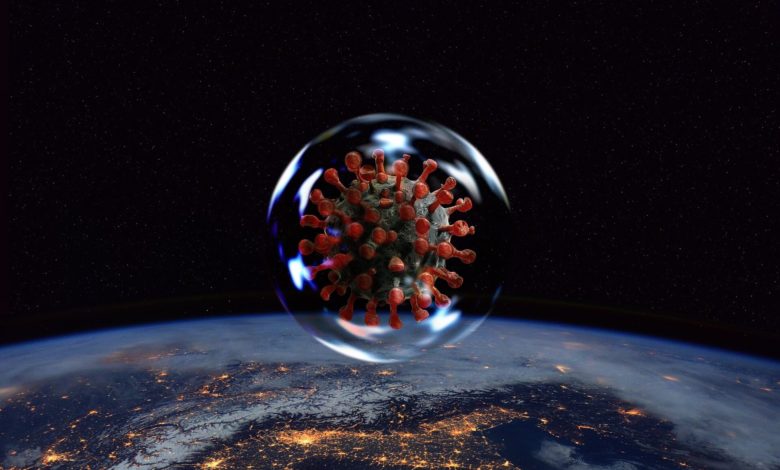Differences Between COVID-19, Common Cold, Flu, and Allergies

COVID-19, flu, colds and seasonal allergies cause many similar symptoms. In the presence of nasal discharge and eye itch, it cannot be inferred that the person is Covid-19, but if there is cough, fever and fatigue, it can be considered COVID-19. On the other hand, these symptoms can also indicate the presence of seasonal flu or allergies. Although the symptoms of flu, cold and Covid-19 are similar, each of them is caused by different viruses. It is difficult to understand which disease the symptomatic person has. The rest of the article contains information on the spread of these diseases, the differences in their symptoms and ways of prevention.
COVID-19, Its Spread and Mode of Treatment
The contagious respiratory disease called COVID-19 or coronavirus is caused by the SARS-CoV-2 virus. It is easily transmitted from person to person in case of close contact. The virus spreads in minute droplets released during breathing, coughing, speaking, singing or sneezing. The disease can spread through both the respiratory tract and touching surfaces or objects that come into contact with infected particles, but this type of spread is not the main mode of spread. Runny nose, nasal discharge, facial pain, itching in the eyes can be seen in both colds and allergies, but they are not specific to Covid-19. The most common symptoms in COVID-19 are dry cough, tiredness, and fever. Some patients reported sore throat, nasal congestion, body aches, runny nose, and diarrhea. Covid symptoms are seen between 2 and 14 days after infection. The Centers for Disease Control and Prevention (CDC) stated that there are 11 main symptoms in coronavirus or COVID-19 disease.
- Fever, chills,
- Dry cough
- Shortness of breath, difficulty breathing
- Tiredness
- Muscle or body aches
- Headache
- Throat ache
- Loss of smell or taste
- Nasal congestion, runny nose
- Nausea or vomiting
- Diarrhea
WHO (World Health Organization: WHO) states that some people do not show any symptoms or feel uncomfortable after being infected. Nevertheless, these people can infect the people around them even if they do not feel sick.
The most important difference between flu, cold and Covid-19 or the new coronavirus disease is that shortness of breath is seen in Covid-19. Shortness of breath occurs before pneumonia develops. If the flu situation has not progressed to pneumonia, shortness of breath will not be seen. In cases where it is seen, the doctor should be contacted. If a fever rises during a cold, shortness of breath may rarely develop. Covid-19 may be more serious in the elderly, high blood pressure, diabetic patients, and those with heart problems. In addition to shortness of breath, pain or pressure in the chest, blue lips or face (indicating lack of oxygen in the blood), confusion, not being able to wake up are very serious and require urgent care.
In Covid-19, most cases are mild and can last for 2 weeks. Remdesivir is an antiviral drug approved for the treatment of Covid-19. Some drugs other than this can only reduce the severity of the disease. In the past days, emergency use was given for the COVID-19 vaccine from China and the first dose was administered to healthcare workers.
Differences Between COVID-19 and the Common Cold
Viruses are the cause of both the common cold and COVID-19. Rhinoviruses are the cause of the common cold. The spreading ways and emerging symptoms of the viruses that cause both diseases are similar. Common cold symptoms usually occur 1-3 days after ingestion. Although there is no cure for the common cold, over-the-counter pain relievers and decongestants can reduce symptoms. Drinking plenty of fluids and resting also facilitates recovery. In the case of a cold, people can usually recover in 3-10 days, but sometimes it can take 2-3 weeks.
Differences Between COVID-19 and Seasonal Allergies
Seasonal allergies are not caused by viruses. Seasonal allergies are an immune system reaction triggered by exposure to grass or tree pollen. The symptoms of seasonal allergies and Covid-19 may be similar, but there are many differences. For example, although breathing difficulties or shortness of breath are seen in Covid-19, such symptoms are not seen in seasonal allergies if the person does not have asthma and other respiratory disorders. Fever and body pain are not observed in allergies. In allergies, more chronic symptoms such as wheezing, sneezing, itchy eyes, coughing, sore throat, and fatigue, which may last for several weeks, stand out. Antihistamines, decongestants and nasal steroid sprays are used for the treatment. In addition, people should close doors and windows when there is a lot of pollen, stay inside, and avoid exposure to allergens. Some allergies can persist for months. Those who have seasonal allergy problems should protect themselves by wearing a surgical or fabric face mask. Although large pollen particles cannot pass, small pollen particles can pass through the mask. If using a surgical mask, it should be discarded after each use, and fabric masks should be washed to remove pollen particles.
Differences Between COVID-19 and Flu
Flu is a respiratory disease that spreads similarly with viruses (influenza A and B viruses), just like Covid-19. The symptoms of both may be similar. It is difficult to know exactly which disease is due to their similarities, but some tests are performed to help diagnose. A person may have received the virus of both diseases at the same time. Some of the infected people do not have symptoms, and some people may have mild or more severe symptoms. Flu symptoms can occur within 1-4 days after ingestion of the virus. Coronaviruses are more similar to the common cold than seasonal flu. Despite this, Covid-19 symptoms are more similar to flu symptoms (cough, fever, runny nose, sore throat, stuffy nose, body or muscle aches, fatigue, headache). Flu does not cause severe shortness of breath as in Covid-19. In the new coronavirus, shortness of breath occurs within 5-10 days after the high fever symptom.
Covid-19 is a more serious condition compared to the flu. Children may experience different symptoms not seen in influenza such as multisystem inflammatory syndrome and blood clotting. Flu treatment can be done with several types of antiviral drugs, unlike Covid-19, acetaminophen is generally recommended to reduce fever. Other than these, cough syrups or lozenges that thin the mucus can be used. Antihistamines may also be helpful against nasal congestion. Since it is difficult or even impossible to distinguish between Covid-19 and flu, people should get the flu vaccine every year, so at least the risk of getting the flu is minimized. Although these vaccines do not necessarily prevent the flu, they can reduce the mild course of the disease and the severity of symptoms.
How to Avoid COVID-19, Cold and Flu?
There are several standard ways to protect against Covid-19, flu, and common cold. Below are the measures that can reduce the risk:
-People should avoid being in close contact (closer than 2 meters) with people other than those living in their own homes.
– A mask should be used in places that can be crowded, such as outside, market, market places.
– Hands should be washed frequently and with soap and water for at least 20 seconds or an alcohol-based (at least 60%) disinfectant should be used.
-Closed and crowded places should be avoided.
– During coughing, sneezing, the mouth and nose should be covered with a handkerchief used once or, if not possible, with the inside of the elbow.
– Eyes, mouth and nose should not be touched.
– Items with high risk of contact such as electric switches, door handles, electronic devices, tables, chairs should be cleaned every day, hands should be disinfected or washed after touching such places.
– The flu vaccine should be made at the right time each year. It will probably be recommended to have the Covid-19 vaccine every year in the following years, as it is newly developed and has recently begun to be applied to humans.
After mutation, Covid-19’s contagiousness has increased. Its easy contamination also leads to an increase in deaths because the general population has not yet been immunized. Serious cases of Covid can cause pneumonia, which can be fatal.





